-
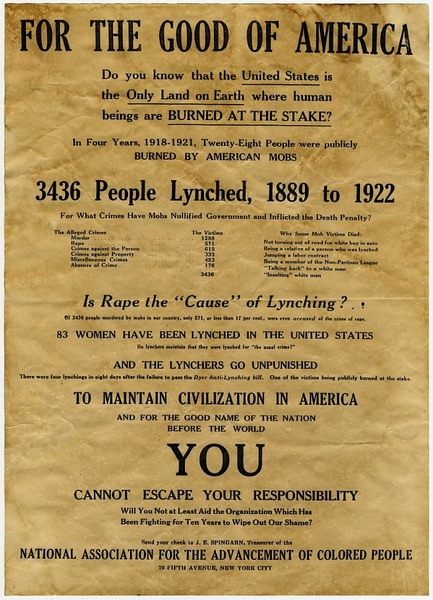
An anti-lynching poster distributed by the NAACP. The poster consists of black text on brown paper. The title at the top reads [FOR THE GOOD OF AMERICA" and the text continues with headings in large text including [3436 People Lynched, 1889 to 1922] and [Is Rape the "Cause" of Lynching?]. There are no inscriptions, front or back.
-
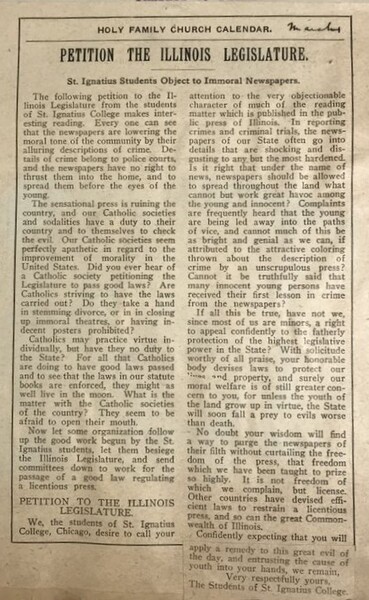
Students at St. Ignatius write a letter that was published in a city newspaper urging Catholics to write to state legislature to pass a law that woul prevent detailed violence from appearing in newspapers. This is the printed letter as it was published.
-

An early menu of foods offered in the cafeteria at St. Ignatius.
-

This program for the 1906 St. Ignatius College Gymnasium Exhibition is attached over a patterned backing paper with a border of colored blooms and leaves.
-

An illustration from page 93 of the "Burnham Plan," or Plan of Chicago, drawn up by Daniel H. Burnham and Edward H. Bennett, edited by Charles Moore (Corresponding Member of the American Institute of Architects), under the direction of the Commercial Club of Chicago during the years 1906, 1907, and 1908.
The Plan of Chicago was never fully implemented, but gave direction to the development of many aspects of the city, such as lakefront parks, boulevards, and transportation networks. The plan also tried to address traffic and environmental problems using other cities such as London, Paris, and Moscow as models.
This illustration shows an aerial view of existing and proposed boulevards and parks. The caption says,
"The boulevards are planned to form a continuous system of circulation; the parks are related closely to the boulevard system, and are located, wherever possible, in connection with them."
-

A scan of the cover of a first-edition copy of The Jungle by Upton Sinclair. The cover is a muted brownish green with white lettering, featuring a black and white illustration of buildings of Chicago's meatpacking industry and smoke billowing from their smokestacks.
Publisher:
New York : Doubleday, Page & Co.
Full book available on the Internet Archive: https://archive.org/details/jungle00sinc/page/n5/mode/2up
-
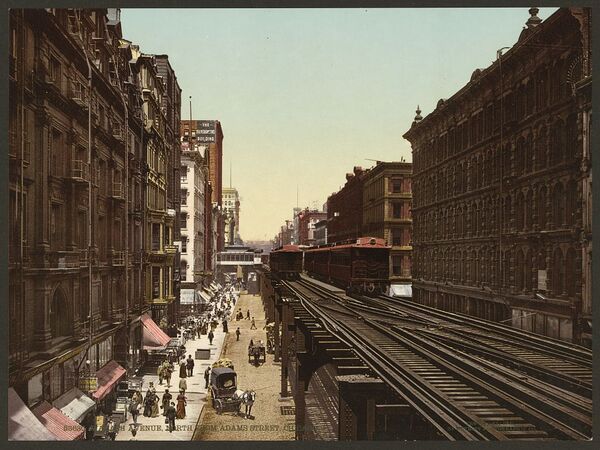
A photochrom or photomechanical print depicts a brightly colored scene of Wabash Avenue looking North from Adams Street in Chicago, with emphasis on the elevated railway ("El" or "L") running above Wabash. Two trains are visible on the tracks, colored red, and a carriage and pedestrians travel below.
Contributor Names: Detroit Photographic Co.
Notes
- Copyright 1900 by Detroit Photographic Co.
- Title from item.
- Title on inventory list: Wabash Ave. north from Adams, Chicago.
- Detroit Publishing Co. no. "53630".
- Forms part of: Photochrom Print Collection.
- More information about the Photochrom Print Collection is available at http://hdl.loc.gov/loc.pnp/pp.pgz
-

Photograph shows Denton True "Cy" Young, head-and-shoulders portrait, facing left, wearing Boston Americans baseball team uniform.
- Title and date based on research by the Pictorial History Committee, Society for American Baseball Research, 2006.
- Bain News Service photograph.
- Forms part of: George Grantham Bain Collection (Library of Congress).
1 photographic print.
-

1 photographic print : gelatin silver ; 10 x 33 in.
- J133145 U.S. Copyright Office
- Copyright deposit; Pittsburgh Athletic Club; October 14, 1909; DLC/PP-1909:43881.
- Names of sitters printed on image.
- Photographer's address; Pittsburgh.
-
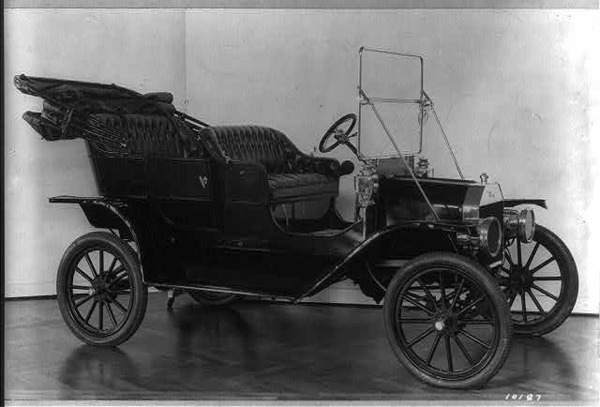
Photograph shows Ford Model T automobile on display.
1 photographic print.
-
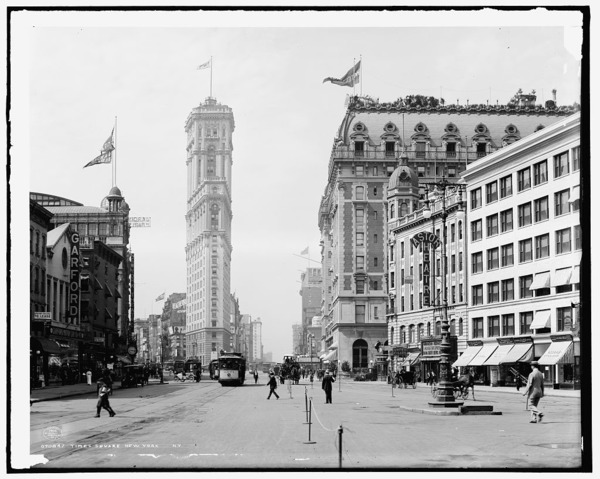
2 negatives : glass ; 8 x 10 in.
- Times Building in center, Hotel Astor at right with flag.
- Negatives are close variants.
- "G 5155" on A negative; "G 5156" on B negative.
- Detroit Publishing Co. no. 070847.
- Gift; State Historical Society of Colorado; 1949.
-
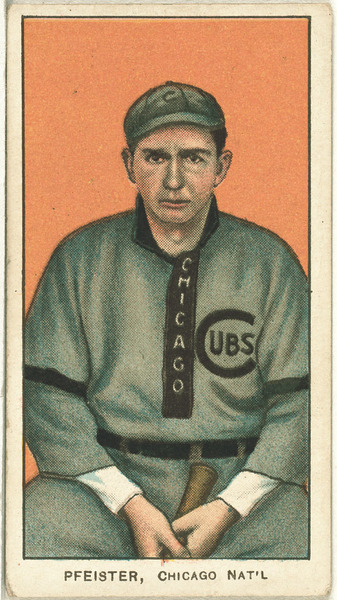
1 print : relief with halftone, color.
http://hdl.loc.gov/loc.pnp/bbc.0732f
- Baseball card title devised by Library staff.
- Issued by: American Tobacco Company.
- "Pfeister"- -caption on card.
- Forms part of: Baseball cards from the Benjamin K. Edwards Collection.
-

1 print : screen print ; sheet 92 x 122 cm. or less.
Print shows international flag and morse code images, probably from World War II.
- General information about the Popular and Applied Graphic Art print materials is available at: https://hdl.loc.gov/loc.pnp/pp.pga
- Title information compiled by Junior Fellows, 2005-2017.
- On item: "8-43".
- Graphic Arts Unit, U.S. Coast Guard.
- Category designation on original folder: Wars-World War I.
-
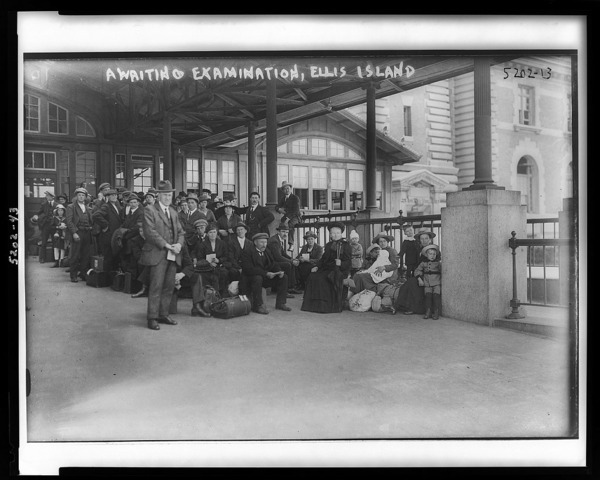
1 photographic print.
-

"The first scene shows the interior of a room in an apartment house. A burglar enters and seeing a portable vapor bath in the corner of the room gets into it to hide. Presently two ladies enter. One is the lady of the house and she is evidently showing her friend through the rooms. The new vapor bath interests her friend, so she lights the lamp and explains how it is operated. Soon the steam begins to come out of the top of the bath. Out jumps the burglar, carrying the cloth sides with him, and makes his escape by jumping through the window. The ladies now call the dog, who rushes into the room and follows the burglar. In jumping out of the window the burglar seizes a clothes line stretched from the house to a pole in the back yard and endeavors to reach the ground by a succession of slides from floor to floor. In the meantime the dog follows suit and finally overtakes the burglar in mid-air and securely fastens his teeth in the burglar's trousers. They both finally drop to the ground together and after a struggle the burglar manages to free himself and climbs to the top of a ten-foot fence. The excitement has aroused the whole neighborhood and in every back yard window a man or woman is leaning out, cheering and yelling encouragement to the dog. Reaching the top of the fence the burglar stops to get his breath and imagining himself perfectly safe he turns round and puts his fingers to his nose. In an instant the dog is after him again and before he can move the dog leaps to the top of the fence and pulls him back into the yard. While the dog keeps his hold the women beat the burglar with brooms, to the intense delight of all. 265 Ft."--Edison films catalog, no. 288.
- H60117 U.S. Copyright Office
- Copyright: Thomas A. Edison; 28Apr1905; H60117.
- Performer: Mannie, the Edison dog.
- Duration: 5:06 at 16 fps.
- Photographed on April 14 and April 17, 1905 at the Edison studio in New York City.
- Paper print shelf number (LC 1969) was changed when the paper prints were re-housed.
- Additional holdings for this title may be available. Contact reference librarian.
- Available also through the Library of Congress Web site as digital files.
- Sources used: Copyright catalog, motion pictures, 1894-1912; Musser, C. Before the nickelodeon, p. 311-312, 317, 324; Niver, K. Early motion pictures, p. 41; Edison films catalog, no. 288, July 1906, p. 35 [MI]; AFI catalog, film beginnings, 1893-1910, p. 135.
- Early motion pictures : the Paper Print Collection in the Library of Congress / by Kemp R. Niver. Library of Congress. 1985.
-
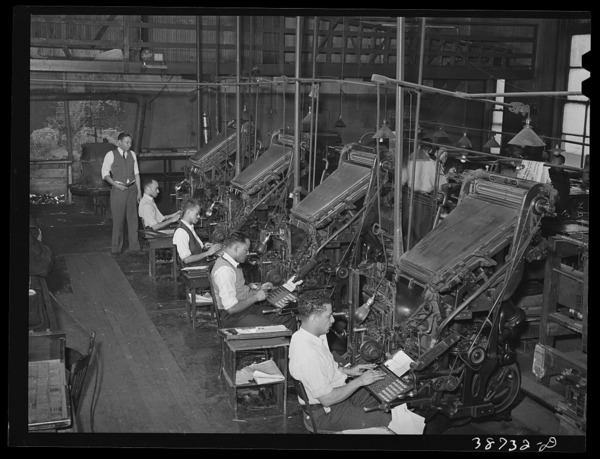
1 transparency : safety ; 3 1/4 x 4 1/4 inches or smaller.
- Actual size of negative is C (approximately 4 x 5 inches).
- Title and other information from caption card.
- Electronic surrogate made from item with the same number in the LC-USF34 series.
- Transfer; United States. Office of War Information. Overseas Picture Division.
- More information about the FSA/OWI Collection is available at http://hdl.loc.gov/loc.pnp/pp.fsaowi
- Temp. note: usf34batch4
-
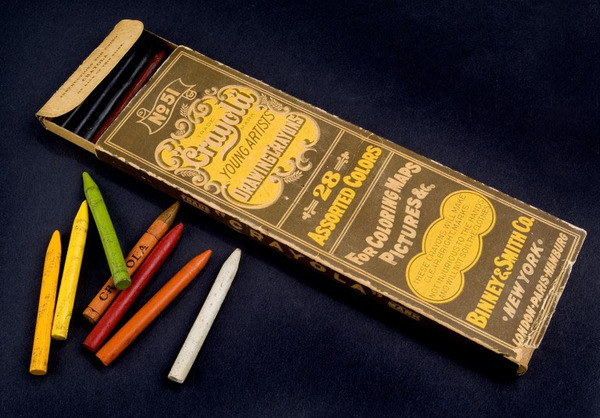
Cherished by generations of child artists, Crayola crayons were invented in 1903 by the Binney & Smith Company of Easton, Pennsylvania. Using paraffin wax and nontoxic pigments, the company produced a coloring stick that was safe, sturdy, and affordable. The name "Crayola," coined by the wife of the company's founder, comes from "craie," French for "chalk," and "oleaginous," or "oily."
This Crayola set for "young artists" was one of the earliest produced. Its twenty-eight colors include celestial blue, golden ochre, rose pink, and burnt sienna. The box is marked, "No. 51, Young Artists Drawing Crayons, for coloring Maps, Pictures" and contains twenty two of the original 28 crayons. The rear of the box depicts a girl coloring a piece of art on an easel and lists the crayon colors contained in the box. Both the packaging and the color names and crayon colors change over time reflecting social and cultural trends. Crayons are icons of American childhood that recall our collective memory for coloring both inside and outside the lines. Affordable and easily obtainable, they have transformed art education and fostered creativity in schools and homes, providing color to children for generations.
-
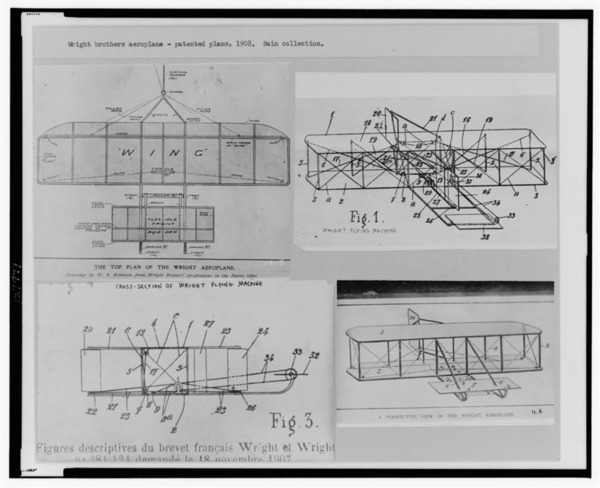
4 photographic prints on mount.
Four plans: The top plan of the Wright aeroplane / drawings by W.B. Robinson from Wright Brothers' specification in the Patent Office; Fig. 1 - Wright flying machine; Fig. 3 - figures descriptives du brevet français Wright et Wright [...]; A perspective view of the Wright aeroplane.
-
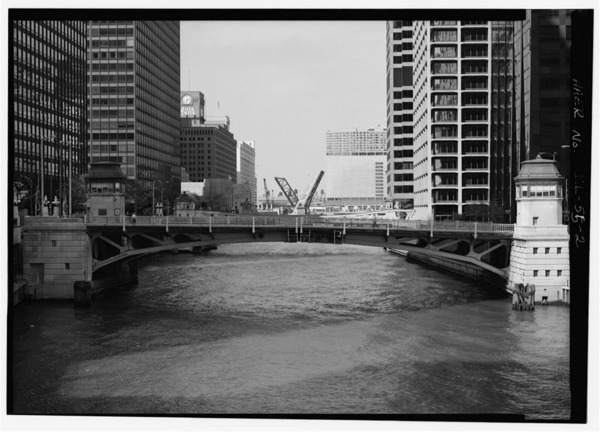
Photo
- Significance: The development of the Chicago trunnion bascule bridge occurred during the first three decades of the twentieth century. Despite the controversy over patent infringement Joseph E. Strauss charged the City of Chicago engineers with infringing on his patented Strauss-Trunion bascule bridge the Chicago bascule received great acclaim within the civil engineering profession. The Jackson Boulevard Bridge was completed according to this design.
- Survey number: HAER IL-55
- Building/structure dates: 1916 Initial Construction
-

1 negative : glass ; 5 x 7 in. or smaller.
Photograph shows Italian inventor Guglielmo Marconi (1874-1937).
-

1 negative : glass ; 5 x 7 in. or smaller.
Forms part of: George Grantham Bain Collection (Library of Congress).
- Title from unverified data provided by the Bain News Service on the negatives or caption cards.
- General information about the George Grantham Bain Collection is available at http://hdl.loc.gov/loc.pnp/pp.ggbain
-
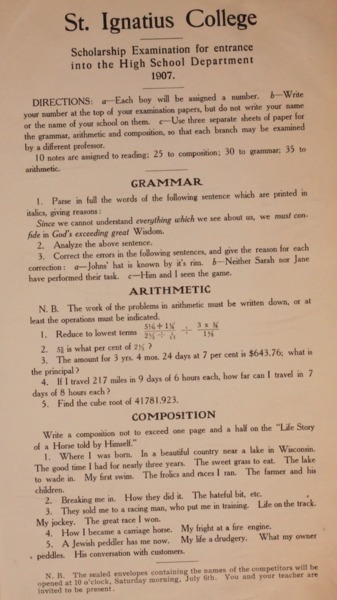
This 1907 St. Ignatius College Entrance Exam tested students on grammar, arithmetic and composition ("Life Story of a Horse Told by Himself").
-

This is the cover for the St. Ignatius Collegian. The words, borders and image of the feather are printed in gold foil against the purple cover.
The St. Ignatius Collegian was first published in 1901 and contained essays, poems, and articles written by students, along with information on events at St. Ignatius College and other Jesuit schools. In 1913, it was renamed Loyola University Magazine.
-
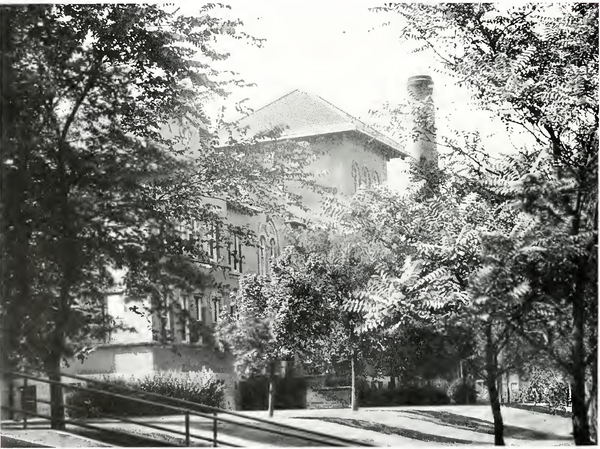
Constructed in 1908, Dumbach Hall is the oldest structure on the Lake Shore Campus. It was named after Henry Dumbach, S.J., who purchased the land for the campus in 1906.
-
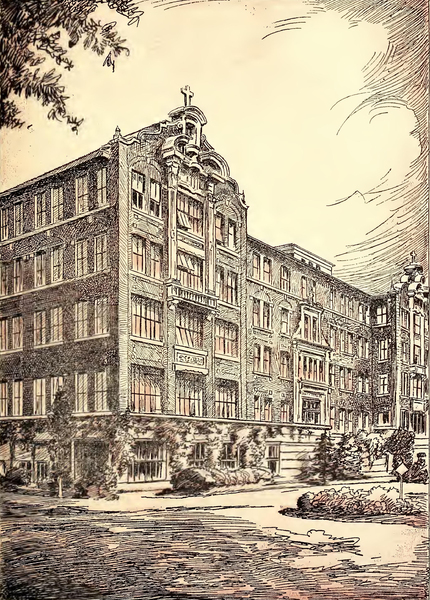
The Administration Building/Jesuit Residence on the Lake Shore Campus was formerly at the site of where the Information Commons currently is.

























